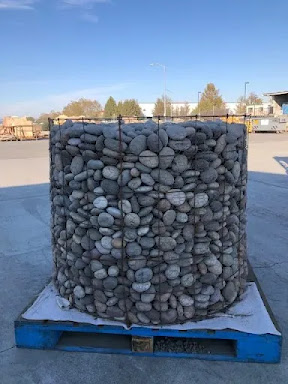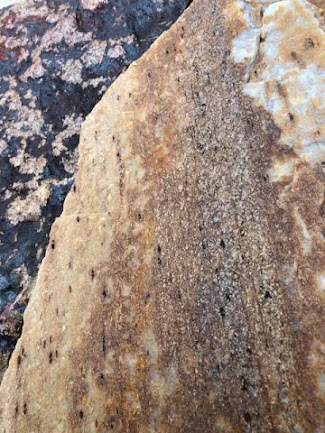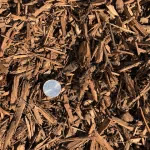Tuesday, December 31, 2024
Why Is January 1st The “New Year”? | Happy New Year | The Dr Binocs Show...
Friday, December 27, 2024
Buff Color Mexican Pebbles & Cobbles : Buff 1/2"-1" (wet)
Wednesday, December 25, 2024
Saturday, December 21, 2024
How to maintain your real Christmas tree - 5 top tips
Wednesday, December 18, 2024
Buff Color Mexican Pebbles & Cobbles : Buff 1/2"-1" (dry)
Sunday, December 15, 2024
Mexican Pebbles & Cobbles
We typically stock and sell the Buff, Black, Red, and Multi-Color Mexican Pebbles & Cobbles. Smaller rock is sold in 75 lb. bags and larger rock in wire baskets on pallet.
Due to variations in color and texture in natural products, we recommend that you see the material at our location prior to ordering.
707-678-8200
Thursday, December 12, 2024
How to Wrap a Tree with Christmas Lights Like a Pro
Monday, December 9, 2024
Bagged Pebbles & Cobbles
We use the term ‘bagged’ because these colorful rocks are not sold by the yard as much of our materials are, but are sold by weight. They are sold in smaller quantities and some are in 40 lb. and 75 lb. bags and others are wire baskets on pallets.
We sell two kinds of this rock: Mexican Pebbles & Cobbles, which includes Buff, Black, Red, and Multi-Color. These are imported from Mexico. The other is Pammie Pebbles, which are even more colorful, and they sourced from the state of Montana.
These are beautiful, well-rounded from thousands of years of tumbling around in water. They come in several different, and even vibrant colors. The buff and black colors are perfect left dry, whereas the red and multi-colored variety comes to life when wet, or with a clear coating over them. They are commonly used in exposed aggregate walkways, ornamental gardens, and more.
All of these rocks are hand sorted because machines couldn’t do that job very well. As a result of the hand selection and the type of rounded rock, these cost a bit more than other types of decorative rock, but we think you’ll agree that they are worth it. Indeed, our sales on these rocks have risen to the point that we have dramatically increased our selection and inventory. Stop by and see them in person.
Due to variations in color and texture in natural products, we recommend that you see the material at our location prior to ordering.
707-678-8200
Sunday, December 8, 2024
Aggregate Base Materials : Pea Gravel 3/8"
Due to variations in color and texture in natural products, we recommend that you see the material at our location prior to ordering.
Tuesday, December 3, 2024
How to Lay Sod in Your Yard - Thrift Diving
Saturday, November 30, 2024
Aggregate Base Materials : 3/4" Crushed Rock
Due to variations in color and texture in natural products, we recommend that you see the material at our location prior to ordering.
Thursday, November 28, 2024
Sunday, November 24, 2024
How to DIY Install the Ultimate Gravel Path
Thursday, November 21, 2024
Aggregate Base Materials : AB Blue 3/4"
Crushed rock is a mixture of ground materials and crushed rock that is easily compacted for use as an underlayment in roadbuiding and many other projects that require a good foundation.
Due to variations in color and texture in natural products, we recommend that you see the material at our location prior to ordering.
707-678-8200
Monday, November 18, 2024
Pathfines & DG : Blue Pathfines or 1/4"xDust
Pathway Fines have become very popular with city landscaping as well as private landscaping. There are several different colors available. We carry the Sonoma Gold or Ginger Pathfines, Blue Pathfines, and Gold DG. Made from finely-ground rock. Compacts nicely and is not dusty. The best aspect is that it doesn’t turn to mud when it rains. Pick your favorite!
Due to variations in color and texture in natural products, we recommend that you see the material at our location prior to ordering.
707-678-8200
Friday, November 15, 2024
3 DIYer Landscape Designs UNDER $1,000 ( ☢️ Don't OVERPAY! ☢️)
Monday, November 11, 2024
Saturday, November 9, 2024
Pathfines & DG : Ginger Pathfines (or Sonoma Gold)
Pathway Fines have become very popular with city landscaping as well as private landscaping. There are several different colors available. We carry the Sonoma Gold or Ginger Pathfines, Blue Pathfines, and Gold DG. Made from finely-ground rock. Compacts nicely and is not dusty. The best aspect is that it doesn’t turn to mud when it rains. Pick your favorite!
Due to variations in color and texture in natural products, we recommend that you see the material at our location prior to ordering.
707-678-8200
Wednesday, November 6, 2024
Calm & Clean: Minimalist Backyard Garden Ideas You'll Love
Sunday, November 3, 2024
Pathfines & DG : Gray DG (Decomposed Granite)
Pathway Fines have become very popular with city landscaping as well as private landscaping. There are several different colors available. We carry the Sonoma Gold or Ginger Pathfines, Blue Pathfines, and Gold DG. Made from finely-ground rock. Compacts nicely and is not dusty. The best aspect is that it doesn’t turn to mud when it rains. Pick your favorite!
Due to variations in color and texture in natural products, we recommend that you see the material at our location prior to ordering.
707-678-8200
Thursday, October 31, 2024
Sunday, October 27, 2024
Thursday, October 24, 2024
Pathfines & DG : Gold DG (Decomposed Granite)
Pathway Fines have become very popular with city landscaping as well as private landscaping. There are several different colors available. We carry the Sonoma Gold or Ginger Pathfines, Blue Pathfines, and Gold DG. Made from finely-ground rock. Compacts nicely and is not dusty. The best aspect is that it doesn’t turn to mud when it rains. Pick your favorite!
Due to variations in color and texture in natural products, we recommend that you see the material at our location prior to ordering.
707-678-8200
Monday, October 21, 2024
The OFFICIAL dry pour sidewalk installation!
Friday, October 18, 2024
Tuesday, October 15, 2024
Saturday, October 12, 2024
How to Create the Perfect Gravel Path With Chris Myers
Wednesday, October 9, 2024
Sunday, October 6, 2024
Thursday, October 3, 2024
Asian-Inspired Front Yard Garden Design: A Zen Oasis
Monday, September 30, 2024
Friday, September 27, 2024
Tuesday, September 24, 2024
Raised Concrete Garden Beds | Modern Cement Planter
Saturday, September 21, 2024
Wednesday, September 18, 2024
Sunday, September 15, 2024
The Secret to Weed-Free Gravel Garden Pathways
Thursday, September 12, 2024
Monday, September 9, 2024
Friday, September 6, 2024
Curb Appeal MISTAKES. This Video will HELP YOU BIG TIME!
Monday, September 2, 2024
Saturday, August 31, 2024
Curb Appeal on a BUDGET // 3 EASY Designs
Wednesday, August 28, 2024
Sunday, August 25, 2024
Flagstone : Bluestone (Imported)
This beautiful natural flagstone is available in 1" and 2"
Thursday, August 22, 2024
3 RANCH Budget-Friendly Landscape Designs
Monday, August 19, 2024
Flagstone : French Vanilla
This beautiful natural flagstone is available in 1" and 2"
Friday, August 16, 2024
Flagstone : Antique Rustic Tumbled
This beautiful colorful flagstone is available in 1" and 2"
Tuesday, August 13, 2024
3 FAST Budget-Friendly Landscape Designs
Saturday, August 10, 2024
Wednesday, August 7, 2024
Sunday, August 4, 2024
PAVERS | Walkway Upgrade
Thursday, August 1, 2024
Monday, July 29, 2024
Flagstone : Gold Quartzite
This golden flagstone is available in Patio 1"- 1.5" & 1.5"- 2", and 3/4"" Minus Stand Up
Friday, July 26, 2024
Tuesday, July 23, 2024
Flagstone : Silver Quartzite
This stunning flagstone is available in Patio 1"- 1.5" & 1.5"- 2", and 3/4"" Minus Stand Up
Saturday, July 20, 2024
Wednesday, July 17, 2024
3 small garden pathways add charm and purpose #garden pathway ideas #garden
Sunday, July 14, 2024
Flagstone : Arizona Patio Tumbled 1" - 2"
The beautiful desert flagstone comes will enhance any home patio or garden.
707-678-8200
Thursday, July 11, 2024
Flagstone : Arizona Rosa
Monday, July 8, 2024
Thursday, July 4, 2024
Tuesday, July 2, 2024
Flagstone : Arizona Buff
This beautiful natural flagstone is available in Patio 1"- 2", 1" - 2" Stand Up, and 1" Minus Stand Up
Saturday, June 29, 2024
ONE YEAR LATER//DO IT YOURSELF LANDSCAPE//TIMELAPSE
Wednesday, June 26, 2024
Product Highlight : Brown Mulch
Brown Mulch adds a little color contrast to your landscaping! Recycled wood colored or dyed.
707-678-8200
Dixon Landscape Materials
150 East H Street
Dixon CA 95620
Website
Sunday, June 23, 2024
Product Highlight : Red Mulch
Red Mulch adds a little color contrast to your landscaping! Recycled wood colored or dyed.
707-678-8200
Dixon Landscape Materials
150 East H Street
Dixon CA 95620
Website
Thursday, June 20, 2024
Sunday, June 16, 2024
Friday, June 14, 2024
Product Highlight : Black Mulch (Bark)
Black Mulch (Bark) is very popular and offers a wonderful contrast with colored foliage as well as protection and weed control. Recycled wood colored or dyed.
707-678-8200
Dixon Landscape Materials
150 East H Street
Dixon CA 95620
Website
Tuesday, June 11, 2024
Saturday, June 8, 2024
Product Highlight : Black Mini Mulch
Black Mini Mulch is a finer, smaller sized mulch similar to the Black Mulch or Black Bark. Recycled wood colored or dyed.
707-678-8200
Dixon Landscape Materials
150 East H Street
Dixon CA 95620
Website
Wednesday, June 5, 2024
Product Highlight : Playground Chips
Playground Chips are wood chips from California conifers that have been milled specifically for use in playgrounds, in addition to being clean, safe and non-toxic.
707-678-8200
Dixon Landscape Materials
150 East H Street
Dixon CA 95620
Website
Sunday, June 2, 2024
Thursday, May 30, 2024
Product Highlight : Shredded Redwood Bark
Commonly called "Gorilla Hair", Shredded Redwood Bark is stringy and fibrous bark that is very popular in garden areas including commercial landscaping projects.
707-678-8200
Dixon Landscape Materials
150 East H Street
Dixon CA 95620
Website
Monday, May 27, 2024
Friday, May 24, 2024
Tuesday, May 21, 2024
Product Highlight : Walk on Bark
Saturday, May 18, 2024
Product Highlight : Small, Medium and Mini Fir Bark
Small Bark 1" or smaller pieces.
Medium Bark with 2" and smaller pieces.
Mini Fir Bark Smaller pieces less than 1/2".
All great for landscaping around bushes and trees.
Due to variations in color and texture in natural products, we recommend that you see the material at our location prior to ordering.
All colored mulches are a recycled wood product that are dyed.
707-678-8200
Dixon Landscape Materials
150 East H Street
Dixon CA 95620


















































